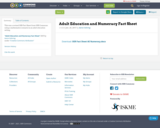
This was a revised OER Fact Sheet from OER Commons using a mathematics scenario in an adult education setting.

This was a revised OER Fact Sheet from OER Commons using a mathematics scenario in an adult education setting.
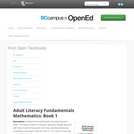
: Fundamental mathematics for adult learners. Book 1 includes a Table of Contents, Glossary, Grades Records, Self Tests, Practice Tests and Unit Tests. Ancillary Resources include the Instructor's Manual. This is 1 of a series of 6 books in the ABE Math collection.
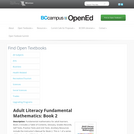
: Fundamental mathematics for adult learners. Book 2 includes a Table of Contents, Glossary, Grades Records, Self Tests, Practice Tests and Unit Tests. Ancillary Resources include the Instructor's Manual. This is 1 of a series of 6 books in the ABE Math collection.
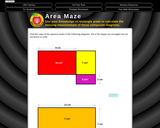
Use your knowledge of rectangle areas to calculate the missing measurement of these composite diagrams.
Find the value of the question marks in the diagrams. All of the shapes are rectangles but are not drawn to scale.
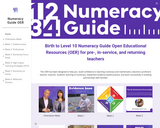
This OER has been designed to help pre-, in- and returning teachers build confidence in teaching numeracy and mathematics, become a proficient teacher, improve students' learning of numeracy, implement evidence-based practice, and work successfully in building partnerships with families.
This OER was conceptualised and designed by Dr Leicha Bragg (Deakin University) and Professor Chris Walsh (Victoria University) through funding provided by the Victoria State Government's Department of Education and Training (DET).
The Birth to Level 10 Numeracy Guide assists educators and families in learning about and supporting numeracy development across the curriculum from Birth to Level 10 using a practical set of resources. The Guide is available here: http://numeracyguidedet.global2.vic.edu.au/

This is a critical thinking evaluation report that may be used as an assignment resource, free of charge, by any educator for the purposes of higher learning. It has been utilized as a resource in:2022-2023 UNC Undergraduate Research Program. Fostering Critical Thinking in Human Motion Analysis. Brown, J., Chandler, R., Fiaud, V., and Armitano, C. This resource was recently featured in a presentation at the National Association for Kinesiology in Higher Education in January of 2024 and disseminated for public use. For more information, please email:jjbrown@ecsu.edu

The aim of this course is to highlight some technical aspects of the classical tradition in architecture that have so far received only sporadic attention. It is well known that quantification has always been an essential component of classical design: proportional systems in particular have been keenly investigated. But the actual technical tools whereby quantitative precision was conceived, represented, transmitted, and implemented in pre-modern architecture remain mostly unexplored. By showing that a dialectical relationship between architectural theory and data-processing technologies was as crucial in the past as it is today, this course hopes to promote a more historically aware understanding of the current computer-induced transformations in architectural design.

The Early Years Learning Framework (EYLF) describes numeracy as the capacity, confidence and disposition to use mathematics in daily life. Mathematics involves understanding about numbers and quantity, operations, patterns, space, measurement and shapes. Numeracy is the application of these mathematical concepts, with skills developing along trajectories from birth. As children’s mathematical capabilities grow, they are increasingly communicated and applied to solve real-world ‘problems’ and build numeracy skills. In the context of early childhood education and care, these problems may include how many cups we need so that every learner has a cup for their water, who has built the tallest tower, or how to make and extend a pattern made with musical instruments.
Evidence-based practices for supporting learners’ early numeracy development
in early childhood education and care settings are listed. Some examples
offered may not apply in all contexts and/or may be more suitable for particular
learners or age groups.

This guide is for secondary school leaders and teachers looking to better support Years 7 to 9 students struggling with foundational literacy and numeracy skills. It is primarily aimed at those able to make whole-school decisions. It makes recommendations based on the best available evidence.
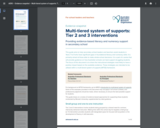
This guide aims to help secondary school leaders and teachers assist students in Years 7 to 9 who have significant gaps in foundational literacy and numeracy skills. It is primarily aimed at those able to make whole‑school decisions. It is a part of a series that will provide guidance on how Australian schools can best support struggling students. The focus of this document is to share the instructional strategies most likely to have a positive impact based on the available evidence. These strategies are intended to be utilised within a multi‑tiered system of supports (MTSS) framework.
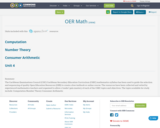
The Caribbean Examinations Council (CXC) Caribbean Secondary Education Curriculum (CSEC) mathematics syllabus has been used to guide the selection and sequencing of quality Open Education Resources (OER) to create a free textbook or online course. The resources have been collected and vetted by experienced mathematics teachers and organised to allow a 'reader' gain mastery of each of the CSEC topics and objectives. The topics available for study include:
Computation
Number Theory
Consumer Arithmetic

The Caribbean Examinations Council (CXC) Caribbean Secondary Education Curriculum (CSEC) mathematics syllabus has been used to guide the selection and sequencing of quality Open Education Resources (OER) to create a free textbook or online course. The resources have been collected and vetted by experienced mathematics teachers and organised to allow a 'reader' gain mastery of each of the CSEC topics and objectives. The topics available for study include:
Computation
Number Theory
Consumer Arithmetic

This course develops logical, empirically based arguments using statistical techniques and analytic methods. Elementary statistics, probability, and other types of quantitative reasoning useful for description, estimation, comparison, and explanation are covered. Emphasis is on the use and limitations of analytical techniques in planning practice.

This resource is a video abstract of a research paper created by Research Square on behalf of its authors. It provides a synopsis that's easy to understand, and can be used to introduce the topics it covers to students, researchers, and the general public. The video's transcript is also provided in full, with a portion provided below for preview:
"These simple tools are transforming how children are treated for acute malnutrition. Designed for people with low literacy, these tools have the potential to help community health workers treat children with severe acute malnutrition close to home, in areas around the world where the nearest health facility is hours away. Malnutrition is the single biggest threat to public health according to the World Health Organization. Globally, it contributes to 45% of deaths of children under 5. Treatment for the most severe cases was, until recently, only available at a hospital as around-the-clock care—which is virtually impossible in many low-income countries. With the development of ready-to-use therapeutic foods, this treatment became available in outpatient programs at lower-level facilities, requiring weekly visits for up to 2-4 months. While this outpatient treatment model has been scaled up to over 60 countries with a high burden of malnutrition, it hasn’t reached every community where it’s needed..."
The rest of the transcript, along with a link to the research itself, is available on the resource itself.
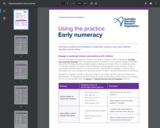
This resource outlines some strategies to embed early numeracy in your early childhood education and care setting.